Share Your Documents for Signing
SigningHub for SharePoint lets you share a wide range of custom documents from your SharePoint account with other users, to get them digitally signed. If a document being shared is other than PDF, then SigningHub will convert it into PDF file before sharing it with the configured recipient(s).
For a list of supported documents, see details: Supported Documents
SigningHub allows documents sharing in the form of a documents package. A package may contain multiple files to facilitate sharing bundle of documents by consuming a single workflow from your available quota.
The recipient(s) are notified through email(s) by SigningHub (upon their turn) to sign the documents package. They can see the shared document in the same document library of their SharePoint account, and can sign it.
Before you proceed to share a package:
You must have the SH-CHECKSTATUS and SH-SHARE permissions in the add-in, and
Required SharePoint permissions.
Share your document for signing from SharePoint
1. Browse the SharePoint site link (as provided by your SharePoint admin) and log into your SharePoint account.
2. Click the document library (i.e. default document library, or your custom document library, or a document set) whose document(s) are required to share.
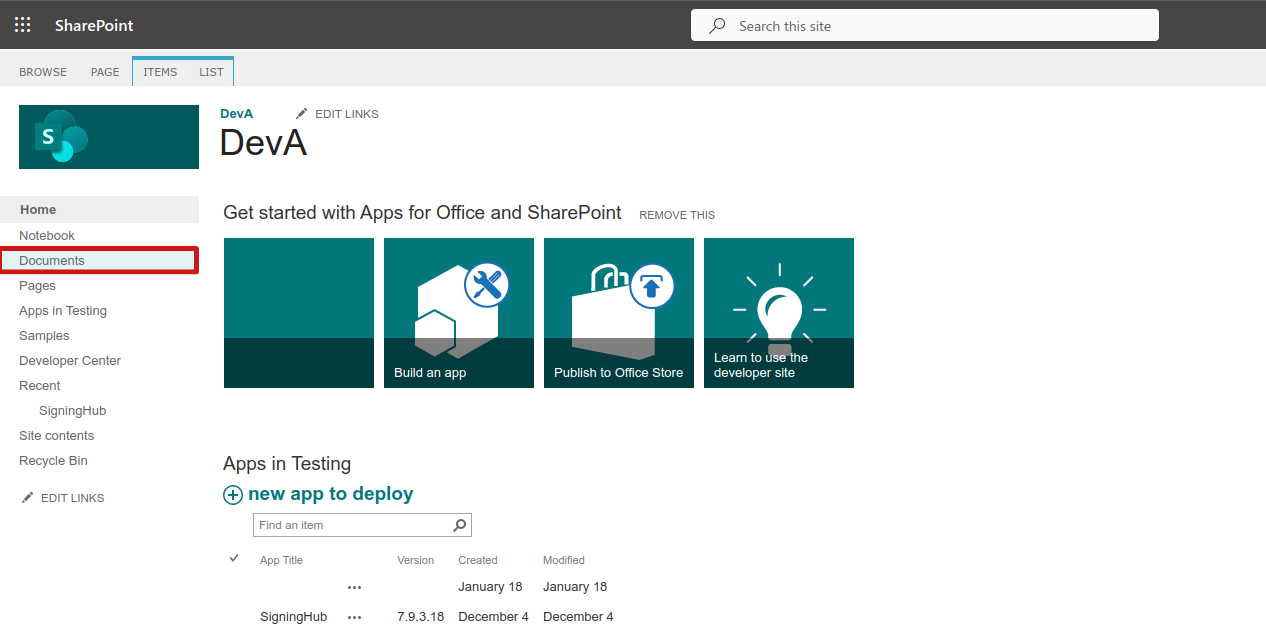
3. Click the "Upload" button to upload new document(s) (to share) and select them, or select the document(s) (to share) from your existing documents list.
4. To share the document, Right-click the document you want to share, and select "SigningHub - Share" from the list. 
5. In the next appearing screen, all the selected documents will be listed under the "Manage Documents" area for further processing.
+ Under the "Document Library" column, the respective libraries are listed from where each document is shared.
+ In case of selecting a wrong document, use adjacent to it to delete it from the documents package.
+ If you skipped any document previously, you can still add them in the same document package.
6. Click  to open a dialog from where you can select the remaining document(s). You can even add documents from different document libraries.
to open a dialog from where you can select the remaining document(s). You can even add documents from different document libraries.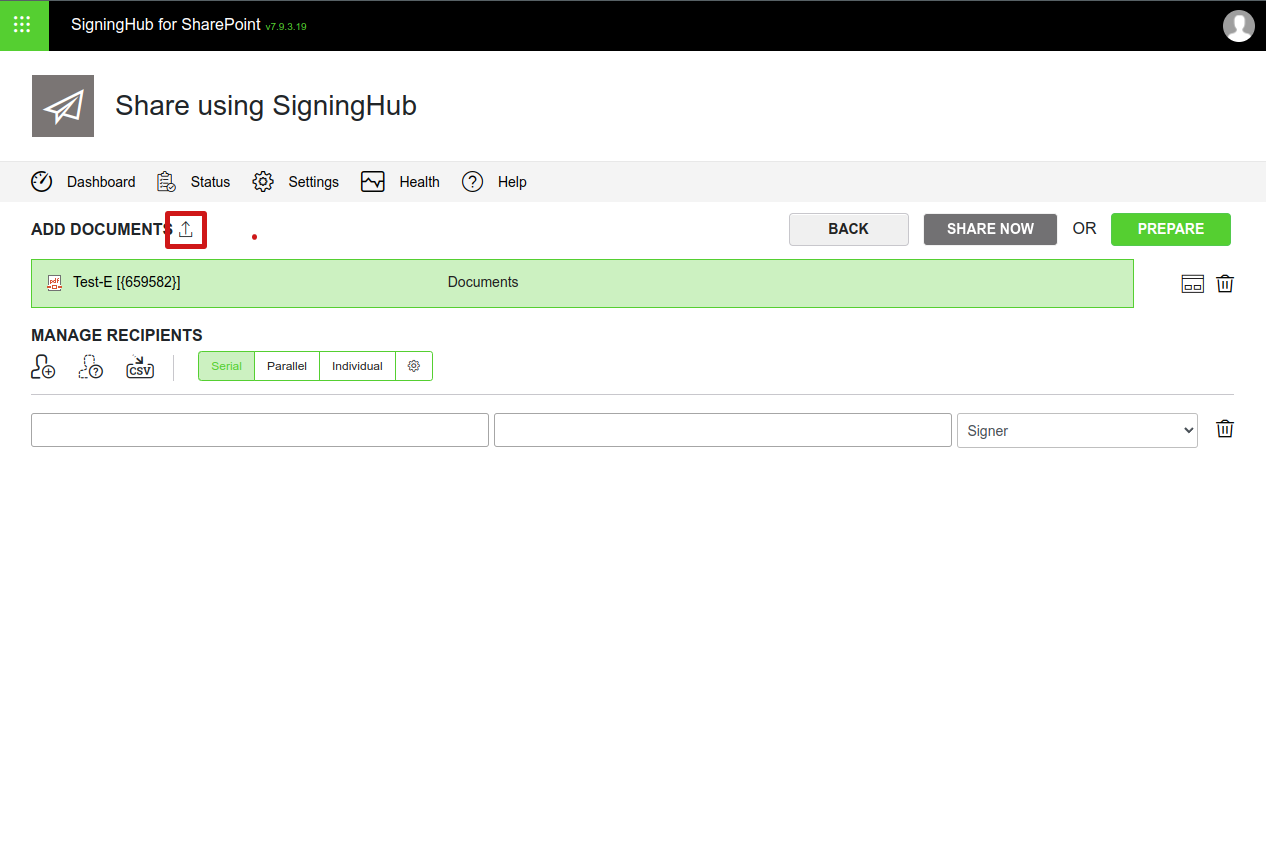
Select a document library from the left column to see its folders and files in the right column. Only the supported file types (see details) will be available for selection. Now select the required document(s) and click the "Add" button.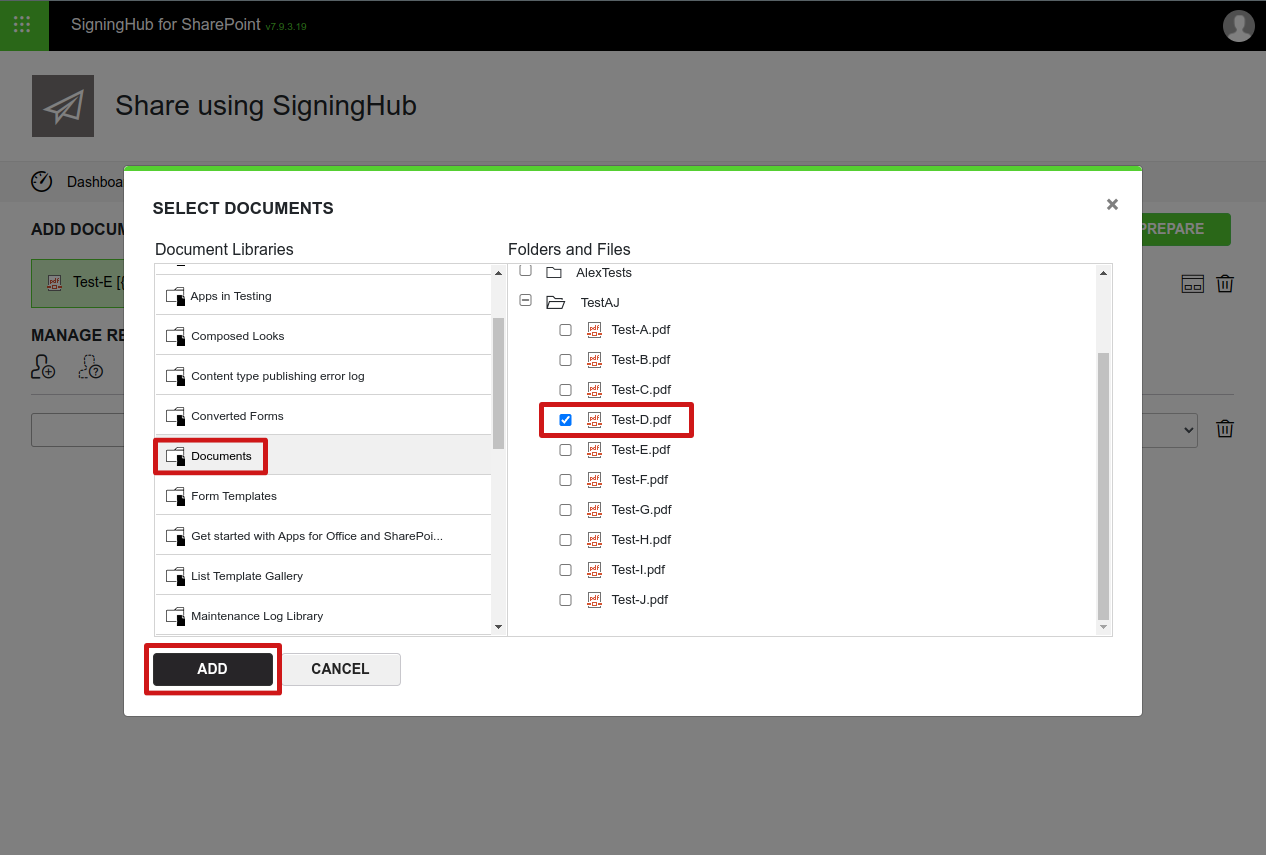
7. You will be moved back to the "Manage Recipients" screen. Configure the workflow type (i.e. Serial, Parallel, or Individual), see details.
8. Specify the contacts, external users, and/ or placeholders with whom you want to share these documents, and configure their roles (i.e. Signer, Reviewer, Editor, Meeting Host, or Send a Copy) in the workflow accordingly. The specified contacts and placeholders are collectively termed as recipients in SigningHub.
+ Your SharePoint and SigningHub contact(s) will be available for selection as you type in their name in the "Name" field.
+ SigningHub contacts will be listed as per your configurations in the Advanced Settings, i.e. Personal or Enterprise.
+ The selected SharePoint contacts will also be added in your SigningHub contacts list for future use, if they don't exist in your contacts list previously.
+ You can also use a CSV file to add recipients, see details.
+ SigningHub for SharePoint supports group signing as well, so you can add group email IDs as required, see details.
+ In case of specifying a wrong contact, use adjacent to the recipient to delete them from the "Manage Recipients" list. Once a contact is specified, a blank field will be displayed below to add another contact and so on.
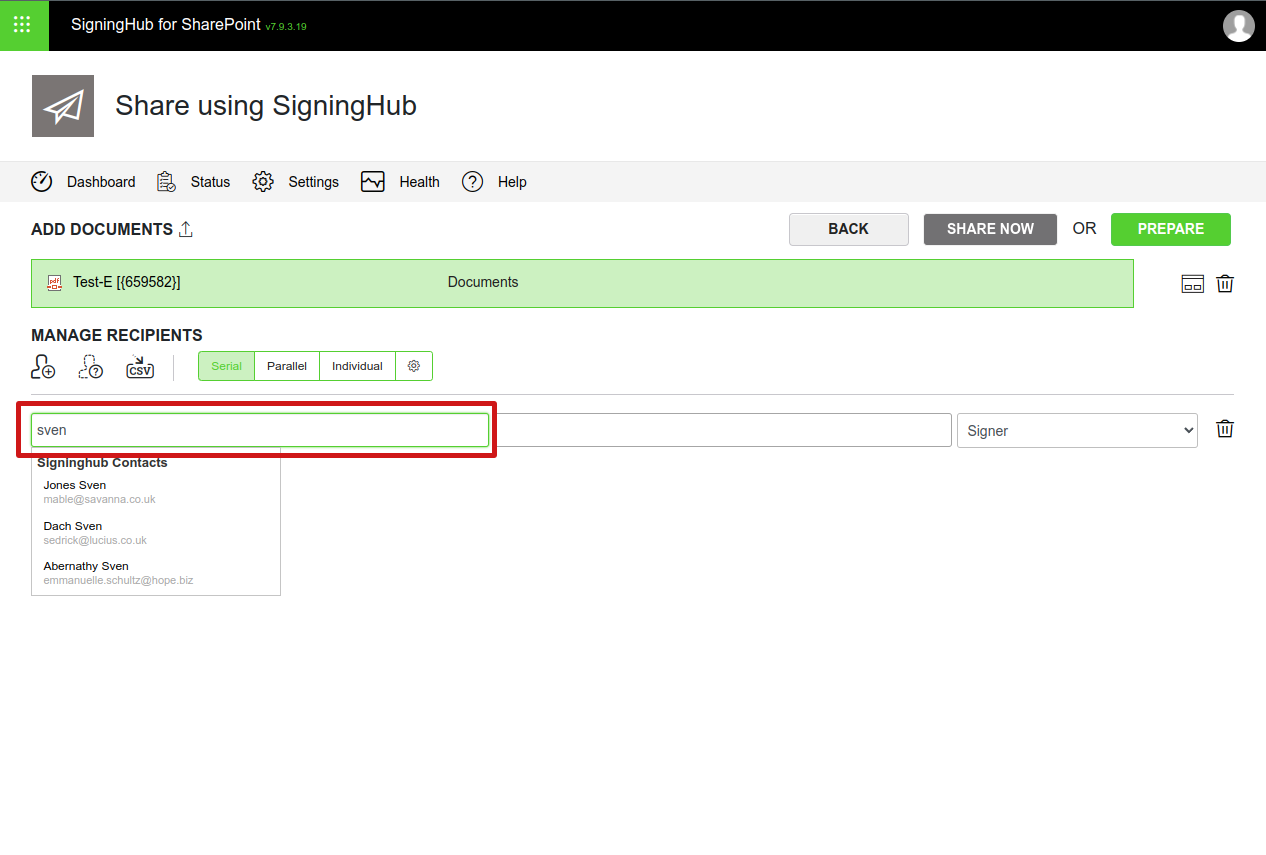
9. After finalising the documents and recipients, click the "Prepare" button to proceed further.
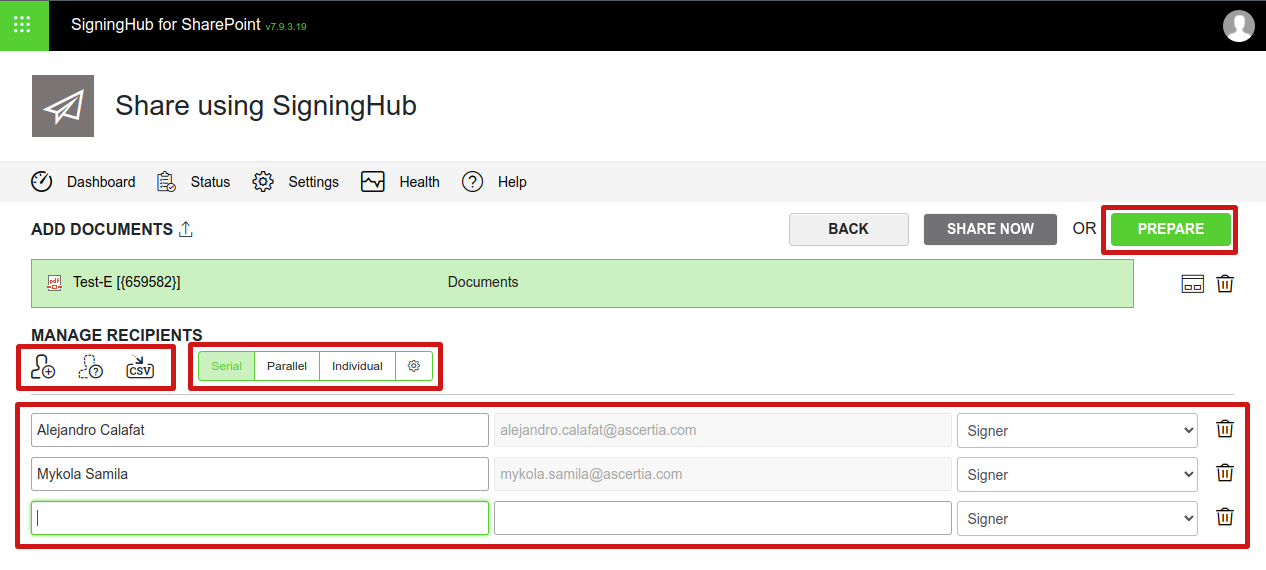
11.The document(s) will be opened inside SigningHub in preparation mode, see details. Configure all the workflow related details as required and click the "Share Now" button.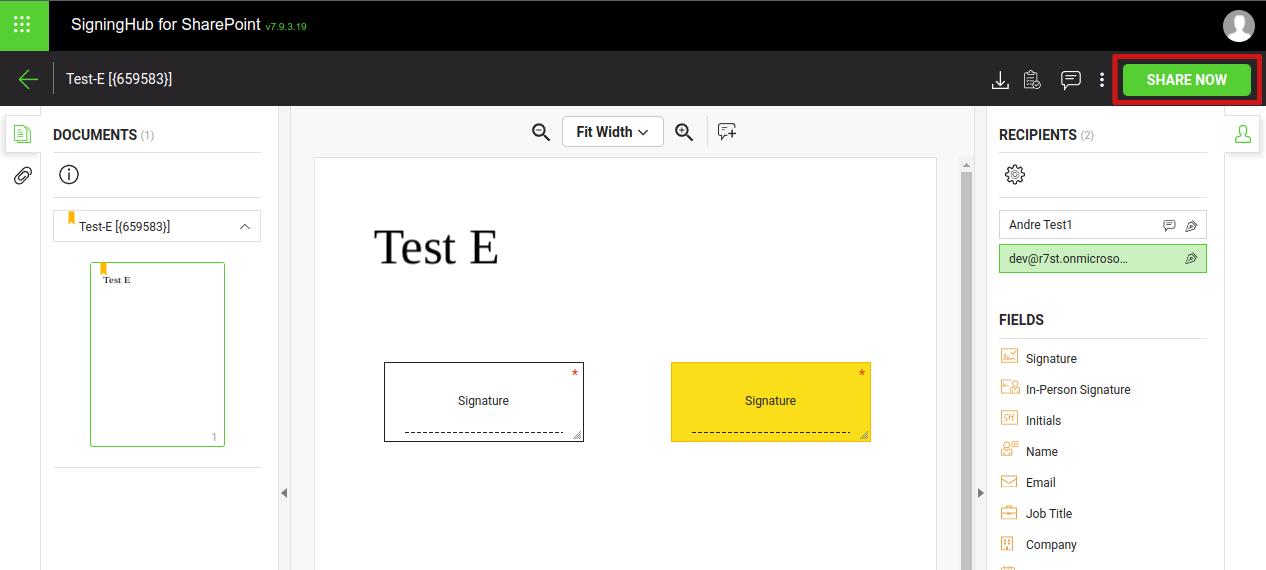
12. A confirmation screen will load and be displayed, showing the file(s) name(s), package ID, performed action and document status. Please do not browse away from this page while its busy loading. The system is performing tasks in the background.
Please wait for a while for the "OK" button to enable. Now you may:
+ Click the "Home" button to move to your SharePoint Home screen.